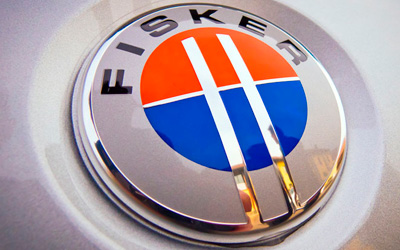 The Fisker Karma, sexy but not scandalous. Photo: Fisker AutomotiveHere we go again.
The Fisker Karma, sexy but not scandalous. Photo: Fisker AutomotiveHere we go again.
ABC News and iWatch have a big new report out that desperately tries to lend an air of scandal to another Department of Energy loan guarantee. It’s a remarkable package, nearly 3,000 words and three ABC News segments full of handwaving and innuendo suggesting that there’s something shady going on, using the word “Solyndra” as often as possible, but in the end there’s … nothing. Not a single bit of evidence of wrongdoing or corruption. It’s a gigantic nothingburger. It just describes the loan program working exactly as it was intended to, but in a tone of dark insinuation.
The fact that there’s no there there will of course not impede the U.S. scandal machine. Already the Drudge Report has linked it, Sarah Palin has Tweeted it, right-wing blogs are flogging it … Next thing you know, other media will be hyping it to, because, you know, “questions have been raised.” And it’s off to the races all over again.
Just for the record, let’s walk through the facts.
The loan program in question is the $25 billion Advanced Technology Vehicles Manufacturing (ATVM) Loan Program, established in 2007 by the energy bill passed under George W. Bush. It’s intended to speed the introduction of more efficient vehicles into the U.S. market and help stand up domestic industries to supply those vehicles.
The ATVM program was fully funded in 2008 and began issuing loans in 2009. In June of that year, Energy Secretary Steven Chu announced the first three recipients: $5.9 billion to Ford, $1.6 billion to Nissan, and $465 million to electric automaker Tesla.
Then, in September 2009, DOE announced a fourth recipient: $529 million to California-based Fisker Automotive. The loan was finalized in April 2010 and announced at an event with Vice President Joe Biden.
At the time, Fisker had one vehicle under development and another planned, both plug-in hybrids; the loan was split between them. The smaller portion, $169 million, was devoted to helping Fisker work with U.S. suppliers to finish up the Karma, a $97,000 four-door luxury sedan. The larger portion, $359 million, was devoted to Project Nina, Fisker’s plan to develop a mid-market plug-in sedan. The company expects the Nina to cost around $39,000 and be in mass production (75,000-100,000 a year) by late 2012, with delivery to begin in 2013.
Everything seems to be going roughly according to plan. Fisker hasn’t missed any loan payments or asked for any further loans. Some regulatory issues pushed the Karma production schedule back a bit, but the first few are on the road now and there are 3,000 pre-orders for more. In October 2009, Fisker purchased the Wilmington Assembly plant in Delaware, which was owned by General Motors from 1947 until it was shut down in July 2009, to manufacture its Nina. The DOE loan is being used, in part, to renovate and upgrade the plant. In June 2011, Fisker started its first round of hiring, bringing on 120 engineers, technicians, and production workers at the plant.
 So far so good, right? Sounds like what the 2007 Congress envisioned and Obama promised: a boost for a promising new U.S. company; jobs in an industry that’s been hit hard by the downturn; groundwork put in place for what promises to be a huge growth market. Where’s the scandal?
So far so good, right? Sounds like what the 2007 Congress envisioned and Obama promised: a boost for a promising new U.S. company; jobs in an industry that’s been hit hard by the downturn; groundwork put in place for what promises to be a huge growth market. Where’s the scandal?
Like I said, the ABC/iWatch story is filled with vague insinuations, but I’ll try to extract and address the main charges, such as they are.
1. This is a subsidy for rich people.
The Karma is extremely expensive — around $100,000. It is indeed a car for rich people; the very first one off the production line went to Leonardo DiCaprio. Al Gore’s in line for one too. Yes, DiCaprio and Gore; this is a field day for gossipy media.
However, some perspective is in order. A small start-up trying to break into an automotive market dominated by huge, well-established incumbents has to start at the high end. It doesn’t yet have economies of scale or mass production capabilities; it needs to prove that it can create a working, reliable car; and it just needs to attract attention. Tesla did the same thing for the same reason. It’s a way to attract more investment.
So in a sense, yes, all government assistance to electric vehicles (or batteries) is “a subsidy to rich people” for the moment, because cutting-edge new products are expensive. The whole point of the assistance is to drive the cost down and accelerate the introduction of the products to a larger mass market.
Tesla and Fisker are both starting with high-end models and then moving aggressively into lower cost mass-market models. And remember: The bulk of the loan to Fisker is to support the Nina.
2. The cars are made in Finland.
As founder Henrik Fisker said, “There was no contract manufacturer in the U.S. that could actually produce our vehicle. They don’t exist here.” So the Karma is being assembled at a plant in Finland.
ABC seems convinced that we should be outraged by this. Taxpayers lending money to a company building cars overseas! Scandal-ish!
But, again: The DOE loan is specifically earmarked for spending inside the U.S. None of it will be spent in Finland. And, again: Fisker is in the process of upgrading a plant in Delaware to manufacture its next car.
And finally, I don’t know about you, but when I hear that a U.S. electric-vehicle company can’t find a manufacturer in the U.S. capable of assembling its cars, my first thought is not, “Well, screw that company, let’s not help them!” It’s, “Criminy, we need to get started creating the industrial infrastructure to support a domestic electric-vehicle industry!”
3. Fisker is a risky bet.
The ABC story makes this point as though it’s exposing some dark secret. But of course it’s f’ing risky! That’s the whole point: to help companies on the cutting edge, companies trying to break into established markets and shake up the status quo. Those companies are, by definition, risky. That’s why Congress set aside $7.5 billion as a loan loss reserve.
And Fisker isn’t that risky. It’s attracted $650 million in private investment since the DOE loan went through. It’s got a car in production. It’s gearing up to produce another. (The Nina is by far the riskiest element of this, simply because it doesn’t exist yet, so no one knows if it will live up to its cost and range projections.) There is always the risk that gas prices will do one of their random plunges right when Fisker introduces its mass-market plug-in, but if that risk were going to scare investors away then there would never be an electric-vehicle market at all.
The administration is to be lauded for taking risks, not scolded. Let’s just hope the endless media scandalmongering doesn’t destroy political will to take chances.
4. Fisker investors are close with the Obama administration.
This is the tricky one. The fact is, the world of big-time cleantech investors is relatively small and the people who are part of it are more likely than the average bear to be Democrats. They believe in clean energy; they are experts in it and advocates for it; for obvious reasons, they raised money and voted for Obama. Many advised his campaign and some advise his administration.
It is therefore inevitable that if government supports cleantech, some of that support is going to go to companies run or funded by big Democratic players. This is part of what’s made it so easy for the media to cast a vague pall of suspicion over the loan programs.
ABC and iWatch did a story in March straining mightily to make hay out of this. But it’s worth reading that story closely. It lists a number of cleantech loan recipients with ties to the Democratic Party. But that’s all it does, in the end: list them. At no point does it establish that there was any improper political influence in the process of reviewing and granting loans. Of course it does the usual he-said she-said — Republican Rep. Cliff Stearns (Fla.) charges favoritism; the administration denies it — but at no point is there any actual evidence of favoritism. At all.
The best ABC and iWatch can come up with is that a rich donor named Steve Westly, a cleantech investor with money in a number of companies that received DOE loans, served briefly on a White House advisory council on clean energy. As a DOE spokeswoman said, “Attending two meetings of a non-binding public advisory panel hardly gave companies supported by Steve Westly a leg up — especially considering the board has no decisionmaking role, isn’t involved in making grants or loans, and never even discussed those companies.”
Anyway, a certain amount of suspicion and skepticism is inevitable and probably healthy. Crony capitalism is bad no matter who’s doing it. And I’m not going to lie: If it were the Bush administration and fossil-fuel investors involved, I’d be extremely suspicious.
But the Bush administration was routinely and openly corrupt; the Obama administration has been, despite all the recent atmospherics, remarkably corruption-free. Unless some actual evidence of collusion or impropriety emerges — and to date there has been none — there’s no reason to assume otherwise … unless you’re a media outlet hungry for clicks and ad revenue.
Anyway, as you can see, ABC and iWatch have managed quite a feat here, pumping up the impression of scandal with absolutely nothing to base it on. We probably shouldn’t be surprised. ABC’s Brian Ross is famous in the blogosphere for mangling an RFK Jr. quote to gin up controversy. And iWatch — a project of The Center for Public Integrity that seemed so promising when it launched — has produced a depressingly large amount of empty clickbait. (I give you this gem: “Limousine liberals? Number of government-owned limos has soared under Obama.” I mean really.) The headline for the Fisker story on the iWatch site right now is “Another Energy Boondoggle?”, which manages not only to inaccurately imply that Fisker is a boondoggle, but also to inaccurately call Solyndra a boondoggle!
There’s more involved here than Obama’s political fortunes. America desperately needs a forward-looking energy policy. It needs to be acting aggressively to support the cleantech industries that are going to dominate the 21st century. But that is simply going to be impossible if a vacuous, click-hungry press corps is going to gin up controversy out of every single investment. That’s what Politico and iWatch are doing: training politicians to play it safe, to be timid in the face of the country’s challenges.
The clicks aren’t worth it, y’all.



